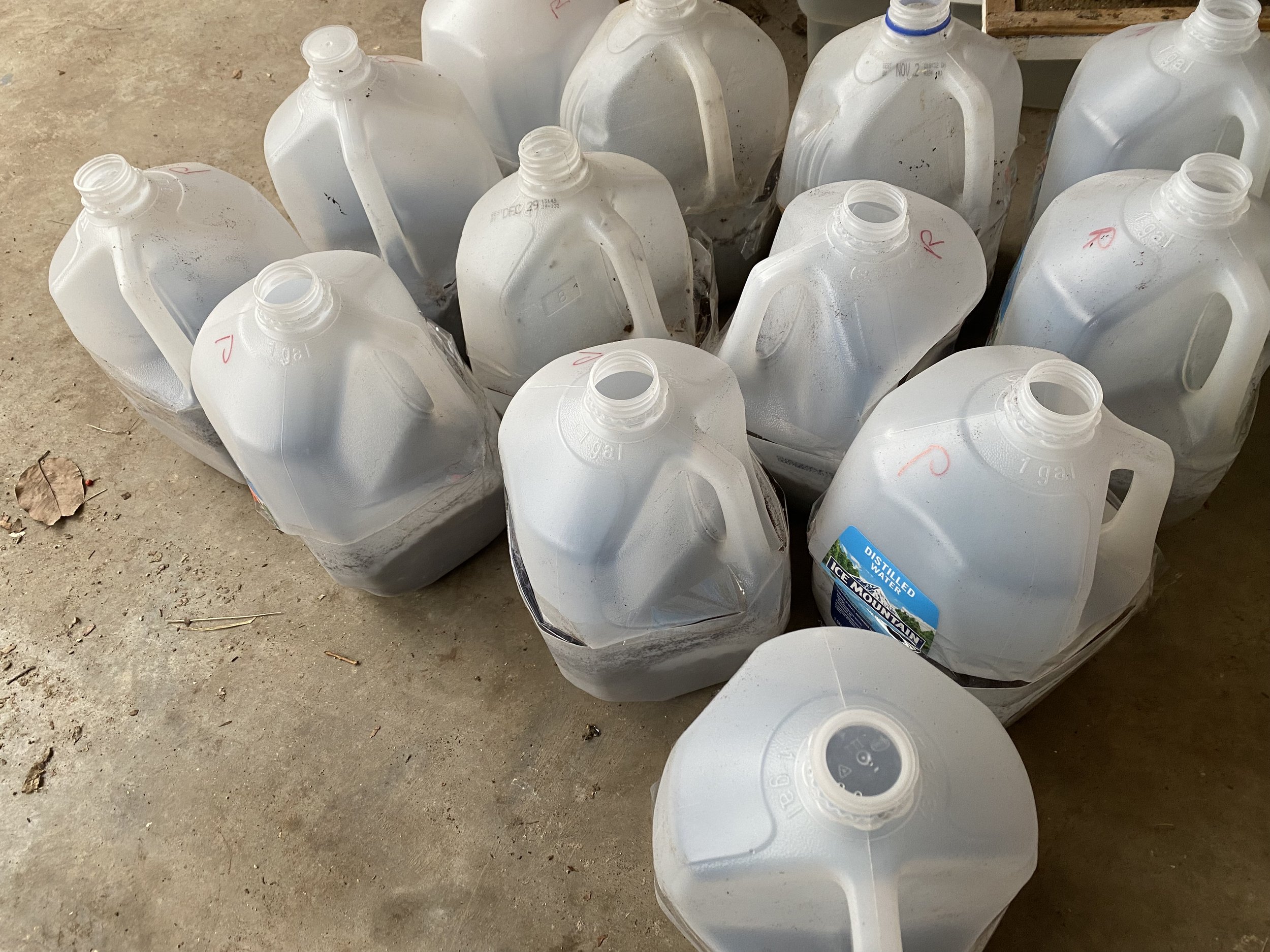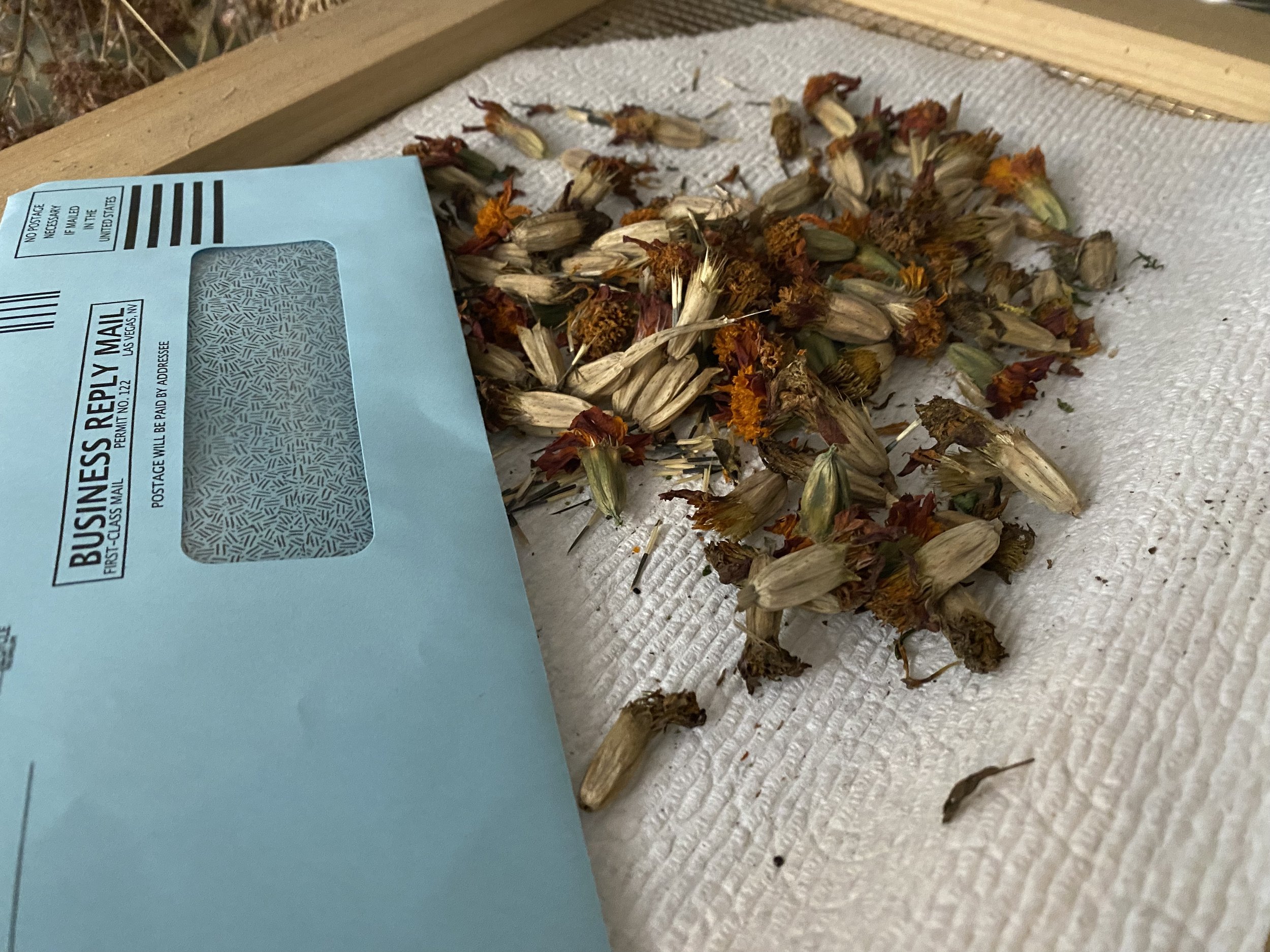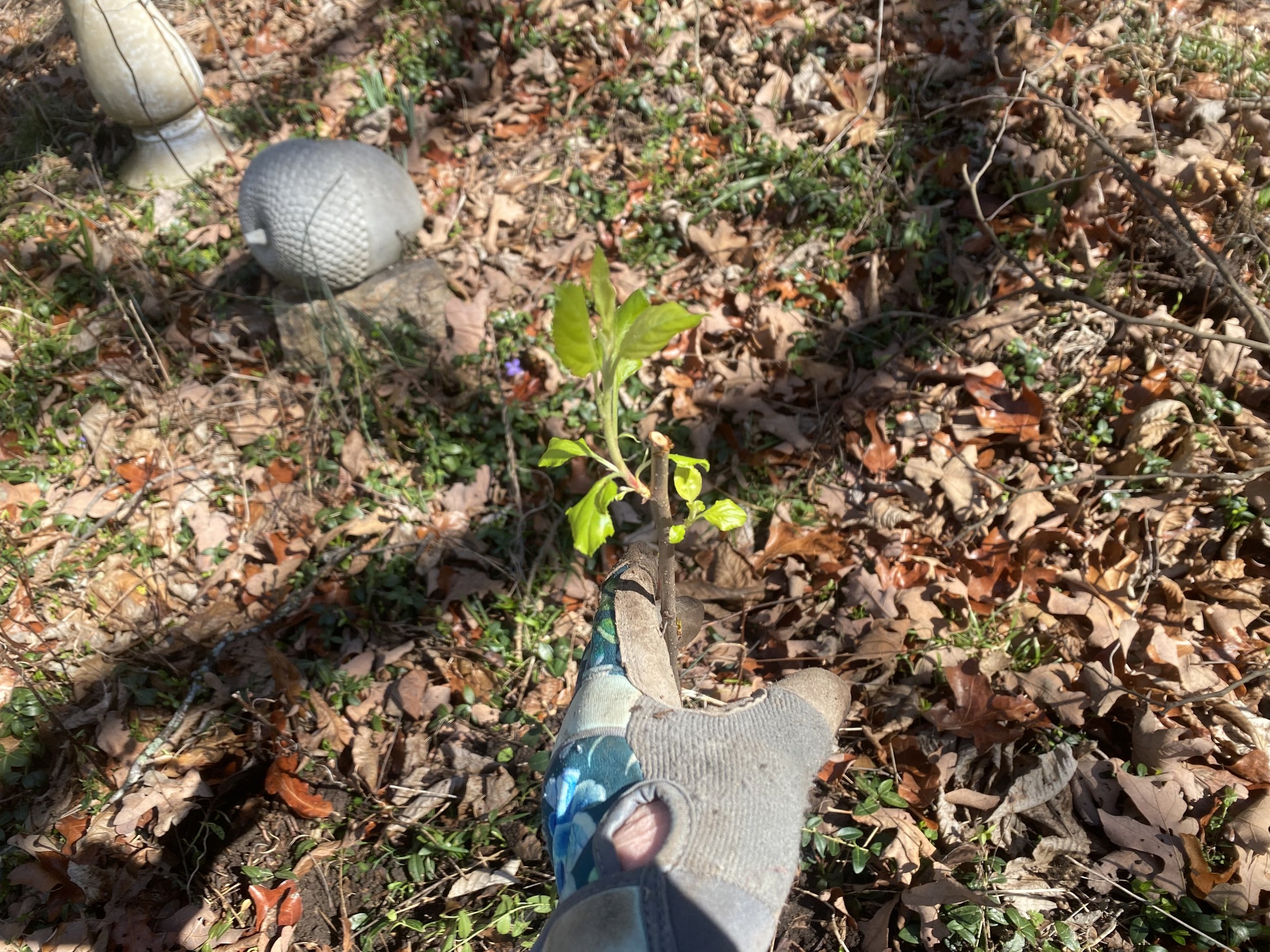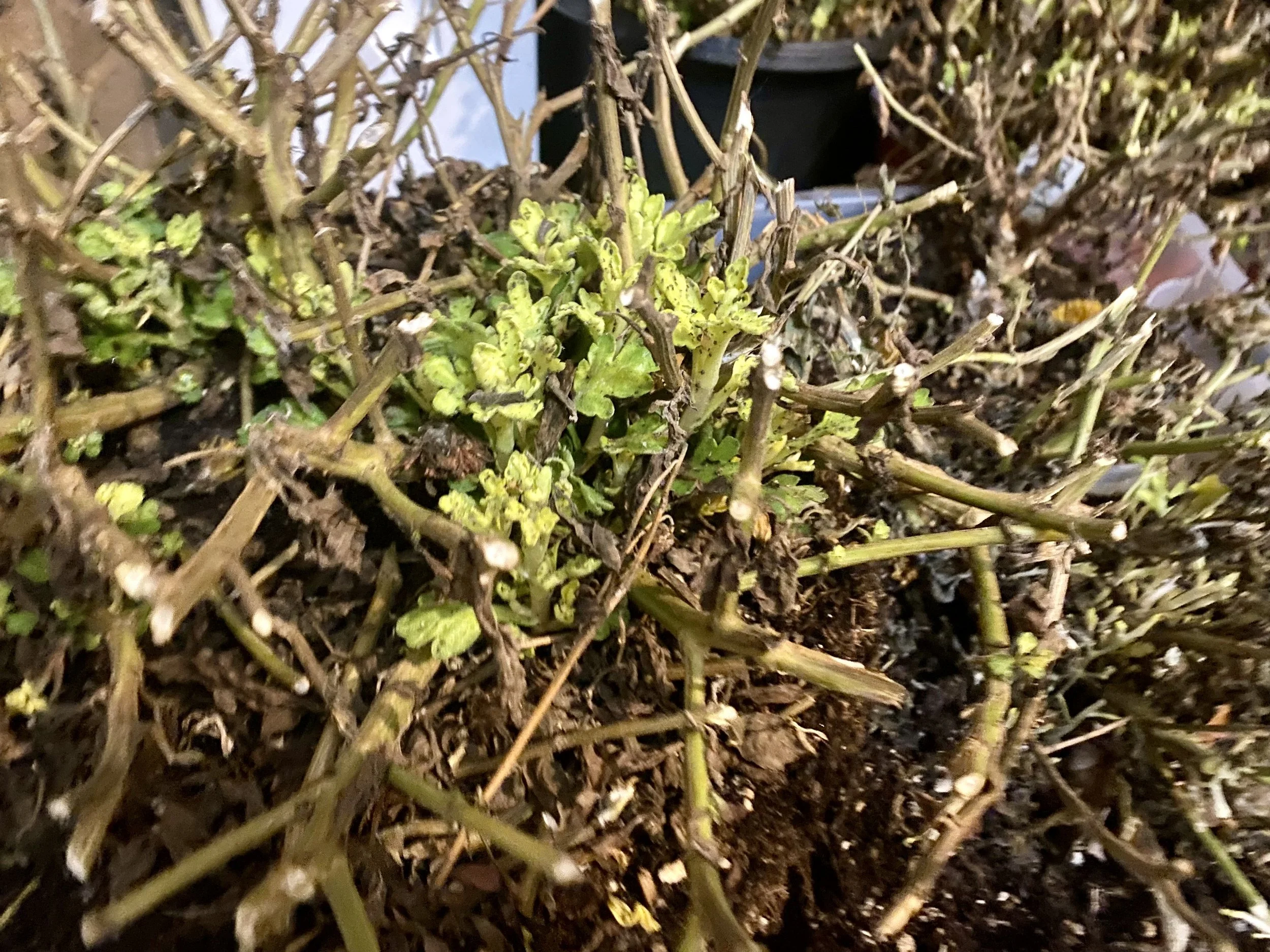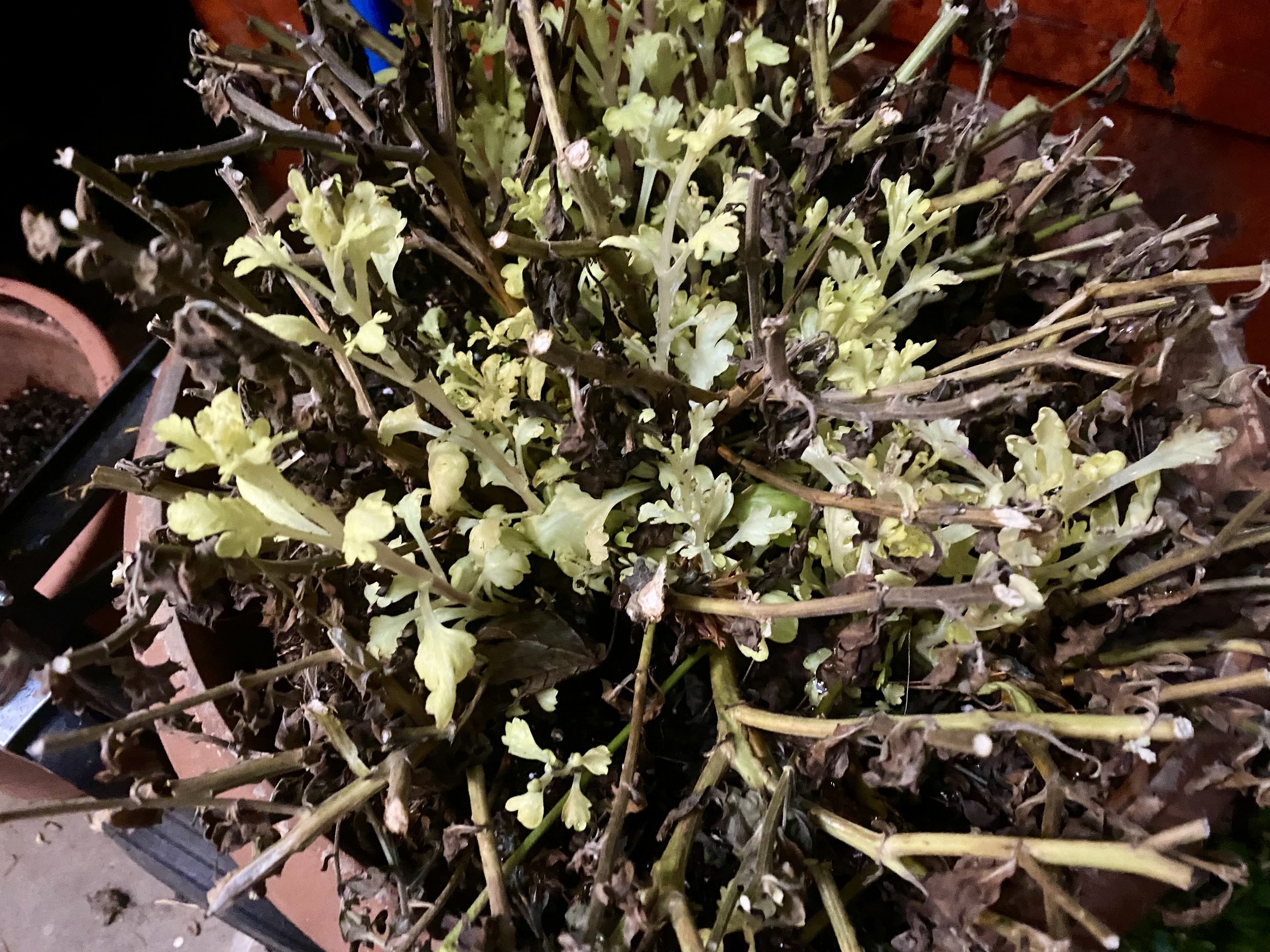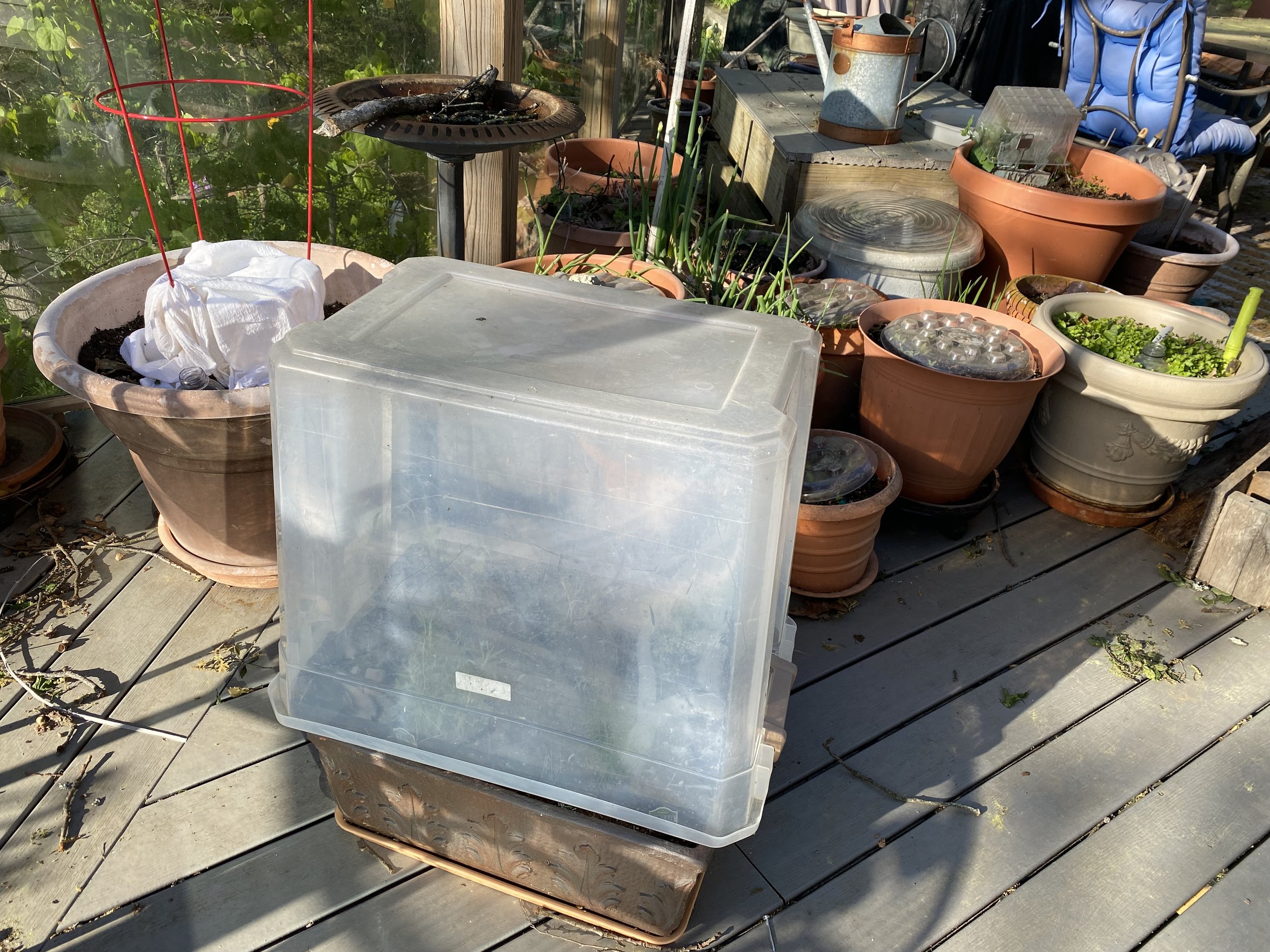Winter Sowing
/Forecasters are calling for more snow and below 0 Fahrenheit temperatures so good time to get those native seeds winter sown. (Charlotte Ekker Wiggins photo)
Winter Sowing
Winter sowing is a way to start seeds outdoors during winter months, allowing them to naturally germinate when conditions are right in the spring. It’s also an excellent way to give seeds that need cold exposure that cold treatment they need to germinate, such as purple coneflowers and black-eyed susans, both excellent pollinator plants.
Here's a guide on how to winter sow in repurposed milk jugs using Black-Eyed Susan seeds:
What you will need
Empty, clean plastic milk jugs or bottles
Utility knife or scissors
Potting soil
Black-eyed susan seeds (or purple coneflower seeds)
Spray bottle with water
Tape (as in duck tape)
Marker
How to get milk jugs ready
As you collect milk jugs, wash them thoroughly, allow to dry and store. I kept mine in plastic garbage bags so they didn’t take up a lot of storage room.
Pierce or cut several drainage holes in the bottom of the bottle first. Use a nail, heated skewer, or the tip of your scissors or knife. Be careful not to puncture your hand.
Then use a utility knife or scissors to cut the bottles horizontally around the middle, leaving the handle intact on one side. It’s hard to punch holes in the bottom once the milk jug is cut in half. The bottom half will serve as a mini greenhouse.
Add a layer of potting soil into the bottom section of the bottle, filling it about one-third of the way.
remove lids if you haven’t already, you won’t need them. (charlotte ekker wiggins photo)
Plant black-eyed Susan seeds
I confess, I saved a lot of seeds earlier in the season so I was ready to plant. If you don’t have seeds, check your local home and garden center, most have a supply all year.
Break up black-eyed susan seed heads and sprinkle over the soil surface. I’m always surprised at how many seeds come out of one little flower head. You can lightly press them into the soil but don’t bury them too deeply. These seeds require light to germinate.
Dust the seeds with soil.
Close the top part of the bottle over the bottom, securing it with tape. This creates a miniature greenhouse effect. Remove milk jugs lids; you won’t need them.
Label the container with the plant name and the date of sowing using a marker. I just add an initial so that I know which seeds I planted.
Place milk jugs outdoors
Find a suitable outdoor location that receives partial sun to full sun. An area protected from harsh winds is ideal.
Set the prepared milk jugs on the ground. You can also bury them halfway in the soil to stabilize them.
Check the containers occasionally to ensure the soil remains slightly moist but not waterlogged. If the soil appears dry, spray water over it just to keep it moist.
As the temperatures increase in the spring, the seeds will naturally germinate when conditions are favorable.
Transplanting Seedlings
Once the seedlings have grown a few inches tall and have developed several sets of leaves, they can be carefully transplanted into larger pots or directly into the garden bed. I wait until after the last frost to transplant directly into the garden.
For more gardening, beekeeping, cooking and easy home decor tips, subscribe to Garden Notes.
Charlotte


